There will be no throwing shade in today’s blog post. Instead let’s talk about shades… lampshades that is!
I’ve been investigating table lamps and their shades lately. As is often the case, it was never my intention to spend hours studying this subject. But I got interested in lampshades after a few, unrelated moments came together in my mind.
The first was an unusual lampshade I spotted during the recent Madison Spring Tour of Homes. This was the first time I’d ever seen a monogrammed lampshade. What a concept! It’s not so much the monogram but the idea of using a lampshade as a blank canvas that caught my imagination.
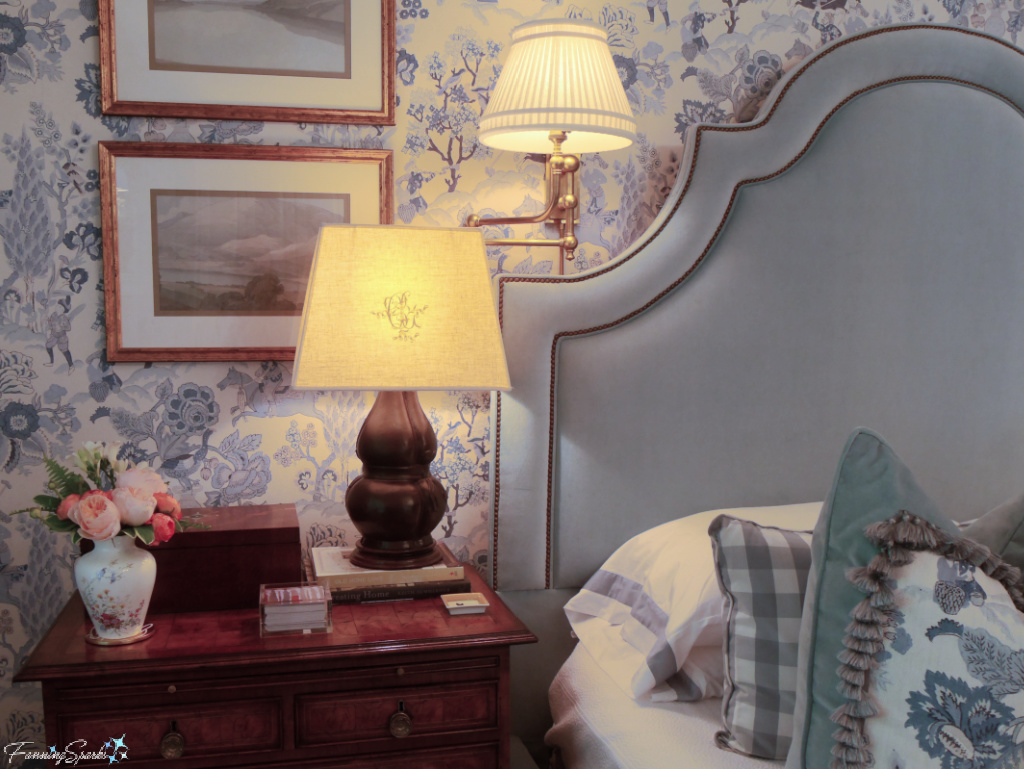 The second, unrelated, “lampshade moment” occurred with the below thrift store find—a small, uplight, table lamp. It isn’t much to look at in its original state but it has a pleasing form. To my eye, it has potential just begging to be revealed … more on that in a future post!
The second, unrelated, “lampshade moment” occurred with the below thrift store find—a small, uplight, table lamp. It isn’t much to look at in its original state but it has a pleasing form. To my eye, it has potential just begging to be revealed … more on that in a future post!
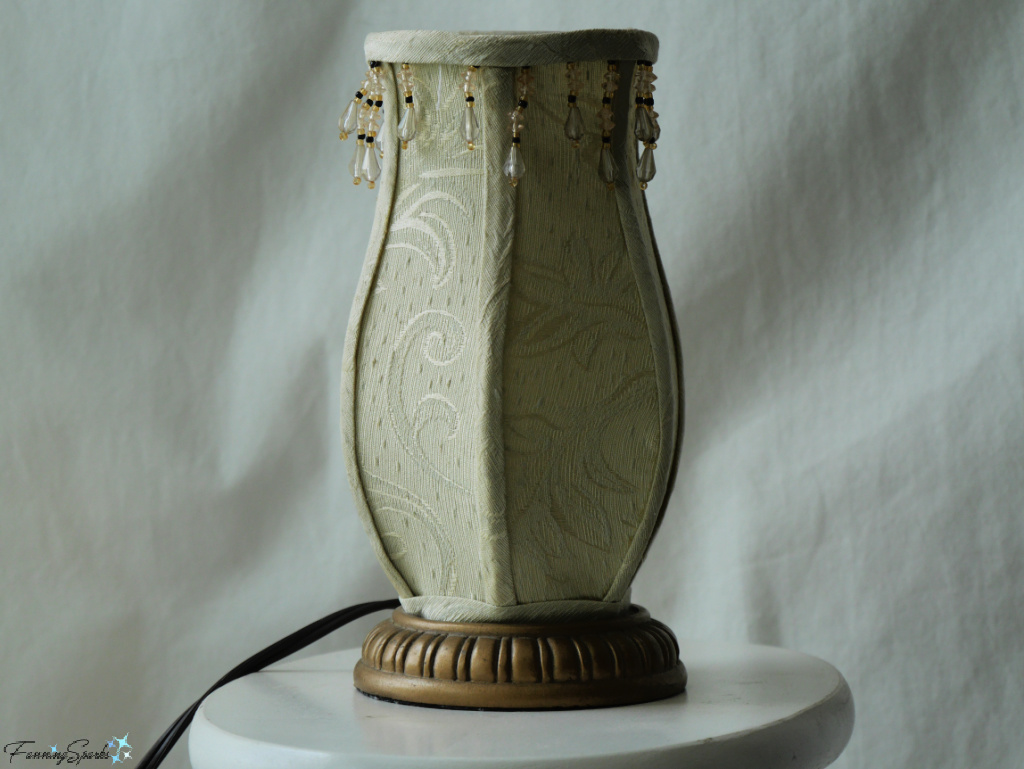 Not having any idea how to actually replace a fabric lampshade, I turned to the internet for help. Predictably, I fell down the rabbit hole as one question led to another to another. Frankly, before this little investigation, I thought lampshades were, well, rather boring. But they don’t have to be! Let me show you some of the beauties I discovered.
Not having any idea how to actually replace a fabric lampshade, I turned to the internet for help. Predictably, I fell down the rabbit hole as one question led to another to another. Frankly, before this little investigation, I thought lampshades were, well, rather boring. But they don’t have to be! Let me show you some of the beauties I discovered.
London-based, Spanish artist Alvaro Picardo hand-paints lampshades with bold stripes and geometric shapes in dramatic colors. The deep slope of these wide, cone-shaped lampshades gives them an outstanding, contemporary flair.
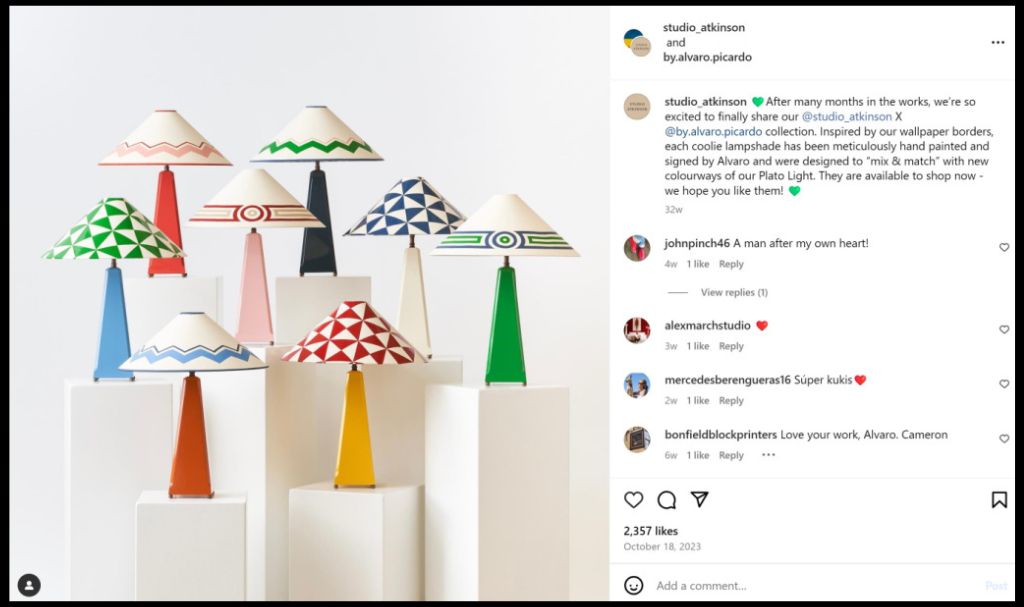 Susi Bellamy is a British artist turned designer who “creates vibrant, colourful interiors based on original and unique artwork painted in the studio, and hand marbled paper designs using traditional techniques” reports her website. The stunning lampshade shown below is a basic drum form meaning the top and bottom rings are the same size and the sides are straight. The shade is covered in a beautiful, marbled, linen fabric in a pattern called “Tamarind Plumes” in an “exquisite colour palette of warm apricot, turquoise, emerald greens and cream”.
Susi Bellamy is a British artist turned designer who “creates vibrant, colourful interiors based on original and unique artwork painted in the studio, and hand marbled paper designs using traditional techniques” reports her website. The stunning lampshade shown below is a basic drum form meaning the top and bottom rings are the same size and the sides are straight. The shade is covered in a beautiful, marbled, linen fabric in a pattern called “Tamarind Plumes” in an “exquisite colour palette of warm apricot, turquoise, emerald greens and cream”.
Drum shades like these are typically considered “hard shades”. They are covered by reinforcing a long rectangle of decorative fabric (paper, rattan, or other material) with a stiff backing such as adhesive styrene or lampshade vinyl. Then the reinforced covering is rolled around the top and bottom rings and secured in place.
 Sorella Glenn, an American sister team, specializes in custom-made, fabric-covered lampshades. “Their debut collection is a carefully considered portfolio of patterns and forms, each hand-pleated and sewn in America” states their website. The shade pictured below is a traditional “empire” form with the top circular ring being smaller than the bottom circular ring.
Sorella Glenn, an American sister team, specializes in custom-made, fabric-covered lampshades. “Their debut collection is a carefully considered portfolio of patterns and forms, each hand-pleated and sewn in America” states their website. The shade pictured below is a traditional “empire” form with the top circular ring being smaller than the bottom circular ring.
Fabric-covered shades like these are typically considered “soft shades”. Traditional lampshade-making techniques are used to hand sew the fabric over the wire lampshade frame. The fabric is pleated in this example. Alternatively, soft shades can be stretched smooth or gathered.
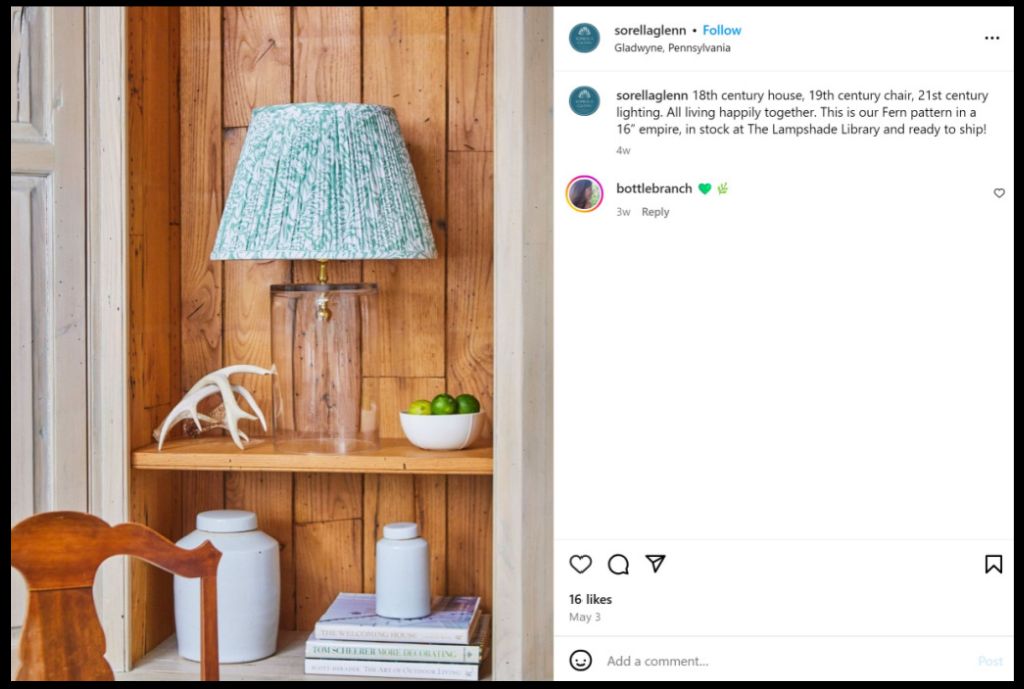 Shown below is an outstanding example of a tailored, stretched fabric lampshade. It’s the work of renowned American designer Crystal Hayes of Elegance Lamps. The style is decidedly vintage Victorian but the hand-dyed silk, lace and fringe make it a one-of-a-kind modern boho treasure. The bell-shaped lampshade has pointed scallops along the bottom edge.
Shown below is an outstanding example of a tailored, stretched fabric lampshade. It’s the work of renowned American designer Crystal Hayes of Elegance Lamps. The style is decidedly vintage Victorian but the hand-dyed silk, lace and fringe make it a one-of-a-kind modern boho treasure. The bell-shaped lampshade has pointed scallops along the bottom edge.
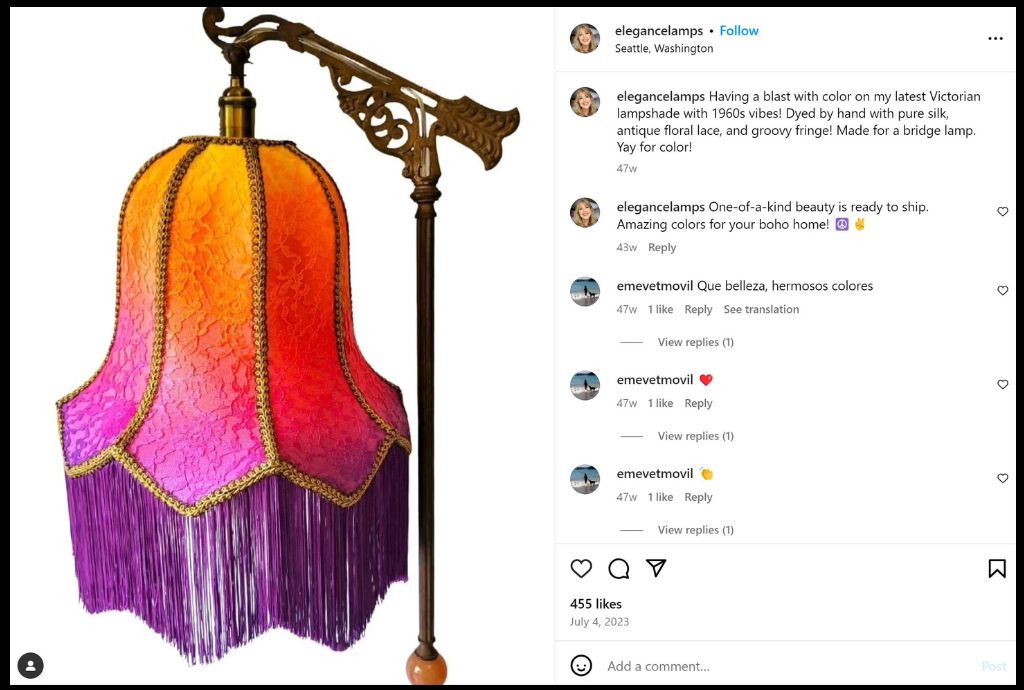 Returning to the concept of a lampshade as a blank canvas, could there be a better example than this work by Lara Sparks Embroidery? Sparks, a British designer, creates these beautiful works of art with free-hand embroidery on her sewing machine. This drum lampshade was probably made with the rolling technique.
Returning to the concept of a lampshade as a blank canvas, could there be a better example than this work by Lara Sparks Embroidery? Sparks, a British designer, creates these beautiful works of art with free-hand embroidery on her sewing machine. This drum lampshade was probably made with the rolling technique.
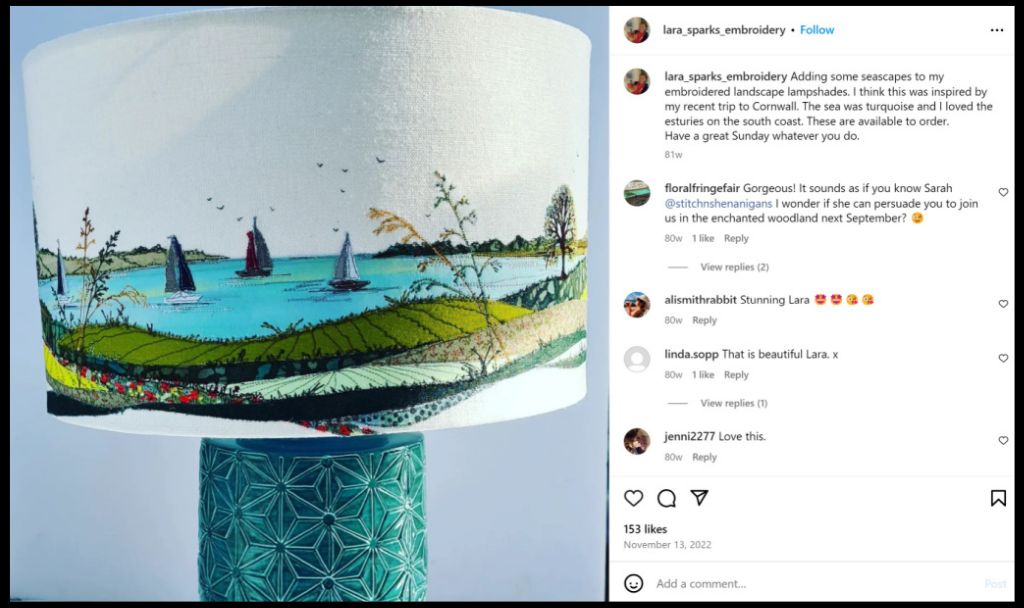 Sarah Walker is another British designer who creates outstanding artisan lampshades. Her material of choice is plant-fibre paper which she either prints with her own original linocuts or she appliques with layers of plant-fibre paper on her sewing machine. Shown below is an appliqued design on a half shade.
Sarah Walker is another British designer who creates outstanding artisan lampshades. Her material of choice is plant-fibre paper which she either prints with her own original linocuts or she appliques with layers of plant-fibre paper on her sewing machine. Shown below is an appliqued design on a half shade.
Half shades, as you can see below, are half-circles—picture a drum shade divided into two. “Half shades are perfect as wall shades but also as table lamps for narrow spaces such as bedside tables, hall console tables, shelves and mantelpieces.” states her website.
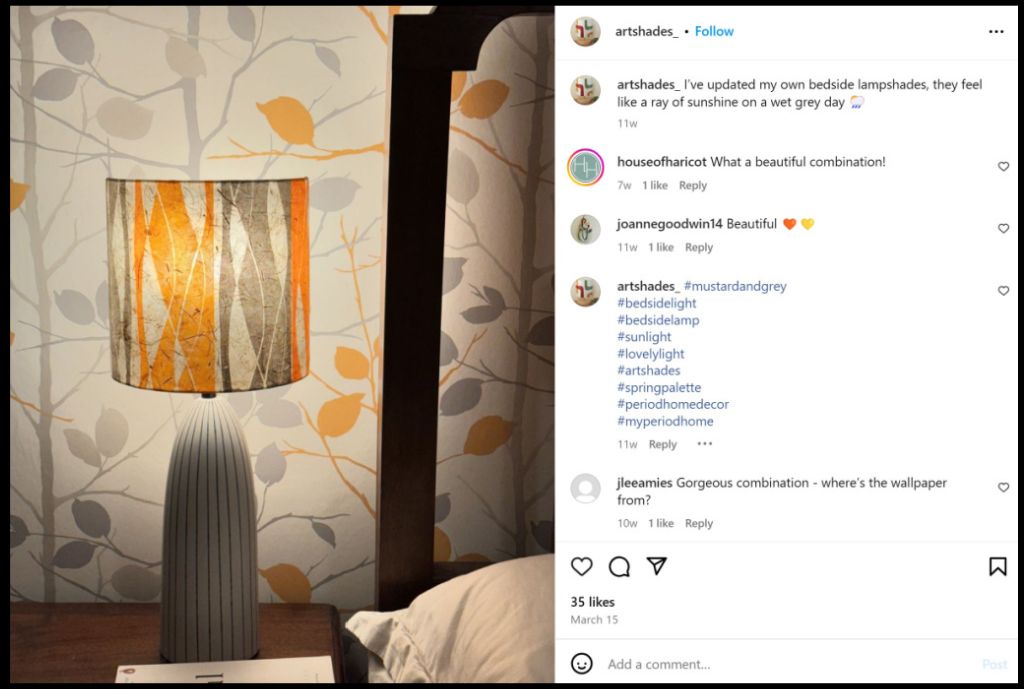 To keep my online investigation manageable, I only looked at shades for table lamps bypassing other types of lamps such as pendants, floor lamps, wall scones and ceiling light fixtures. I also narrowed the scope to soft materials including fabric, paper, fiber, parchment, rattan, etc and ignored metal, plastic, wood, stained glass, and so on.
To keep my online investigation manageable, I only looked at shades for table lamps bypassing other types of lamps such as pendants, floor lamps, wall scones and ceiling light fixtures. I also narrowed the scope to soft materials including fabric, paper, fiber, parchment, rattan, etc and ignored metal, plastic, wood, stained glass, and so on.
Even with this narrow focus, I found so many beautiful lampshades and talented lampshade makers I had to start a Pinterest board to keep track of them all. See my latest board, Lampshades – FanningSparks Favs, featuring nearly 300 unique and inspiring lampshades. Here’s a sneak peek.
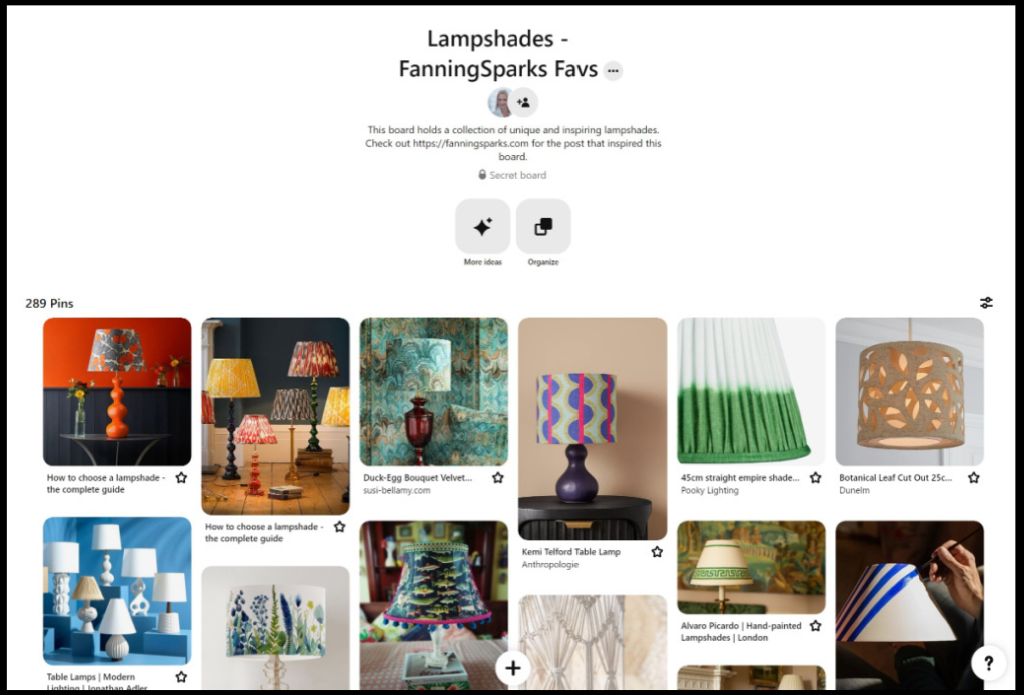 My lampshade deep dive also uncovered some general guidelines regarding table lamp shades. I’ve documented my findings here for future reference. I hope you’ll find it useful or, at the very least, mildly entertaining.
My lampshade deep dive also uncovered some general guidelines regarding table lamp shades. I’ve documented my findings here for future reference. I hope you’ll find it useful or, at the very least, mildly entertaining.
Finding #1 Let There Be Light But Not in My Eyes
First and foremost is function. A table lamp is, obviously, meant to provide light while a lamp’s shade serves to 1) direct the light to the desired location 2) shield the viewer’s eyes from the glare of the light bulbs much like a visor and 3) hide the light bulb(s) and lamp hardware.
The below photo, taken at the Birmingham Southern Living Idea House several years ago, illustrates how a lampshade directs the light coming from the table lamp.
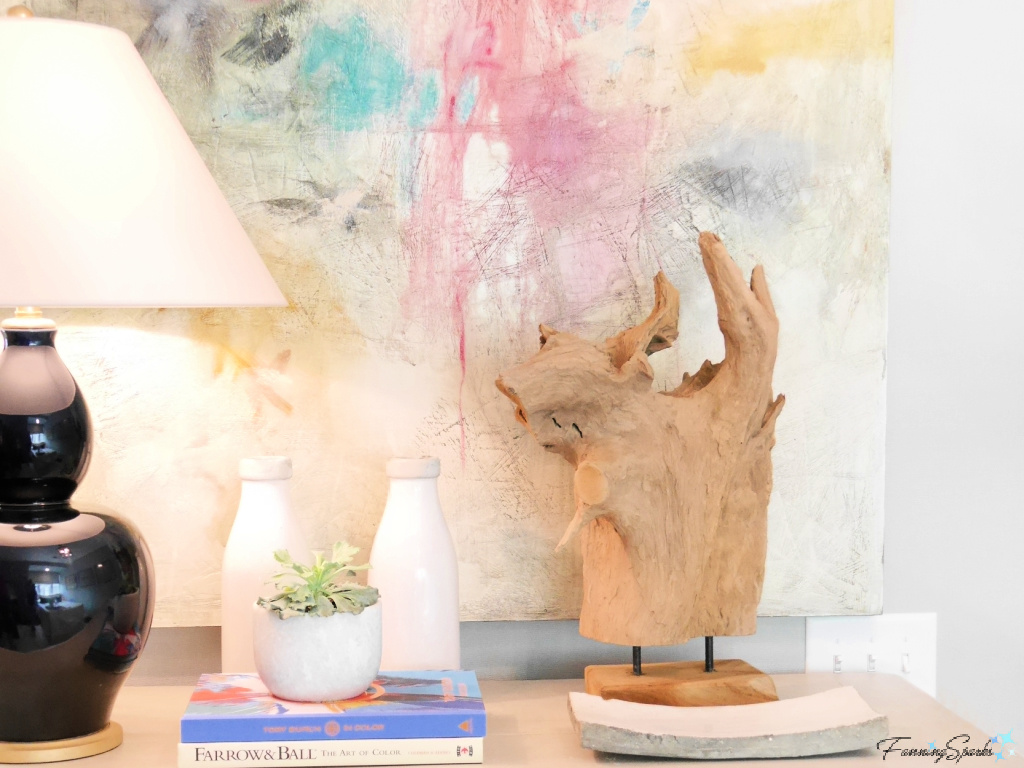 Finding #2 As Distinguished and Gay as a Paris Hat
Finding #2 As Distinguished and Gay as a Paris Hat
“Effective lamps and accessories” wrote design legend Dorothy Draper in her book Decorating is Fun, “can lift any room right out of mediocrity into something as distinguished and gay as a Paris hat.” You’ll want to take into account this book was written in 1939 so her comparison between lamps and hats was much more relevant at the time. Draper goes on to say “Of all the accessories in your room the lamps are definitely the first, foremost and most powerful. Nothing can do as much or as little for you as your lamps.”
This dramatic black lamp base and shade make a bold statement at the Southern Living Idea House in Senoia.
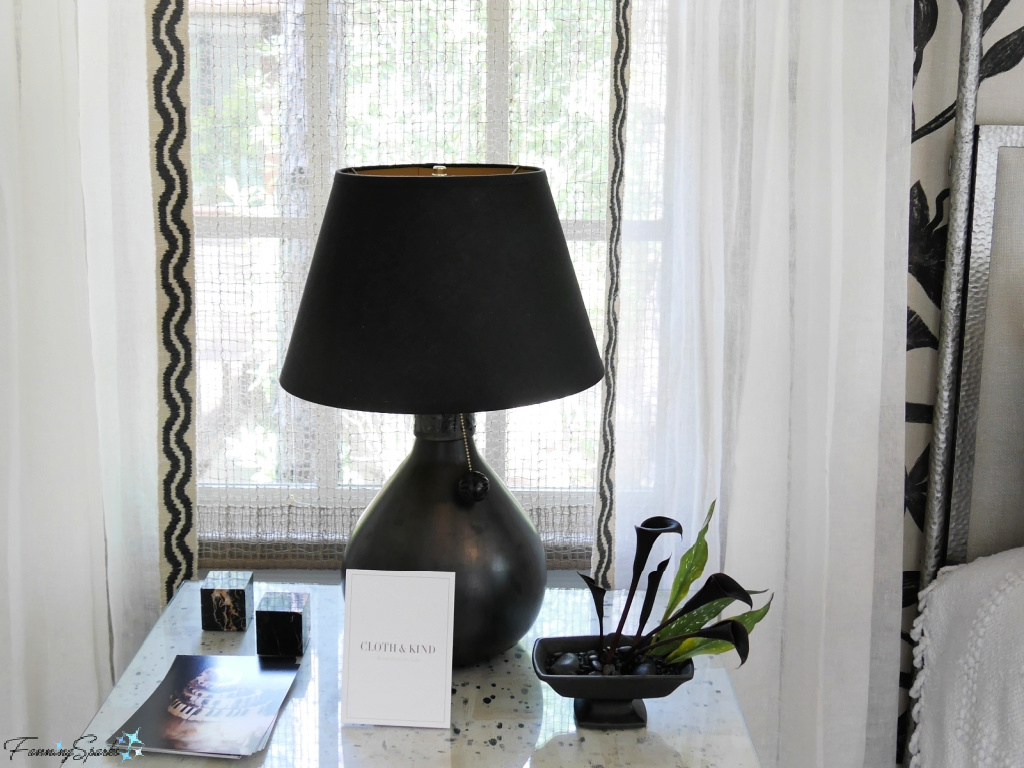 Finding #3 Lamp Base + Shade = Impact
Finding #3 Lamp Base + Shade = Impact
It may be tempting to just slap a generic, neutral-colored lampshade on a nice lamp base and be done with it. I’ve certainly taken that approach in the past. But given all the terrific options available to us, it’s probably worth the effort to be a little more discerning and select a lampshade that makes an impact. Lampshade specialists recommend choosing a shade that 1) complements your lamp base and 2) enhances your room décor.
The table lamp shown below sits beside the sofa in our living room. The unusual base combined with the bead-trimmed shade make a nice impact in this setting.
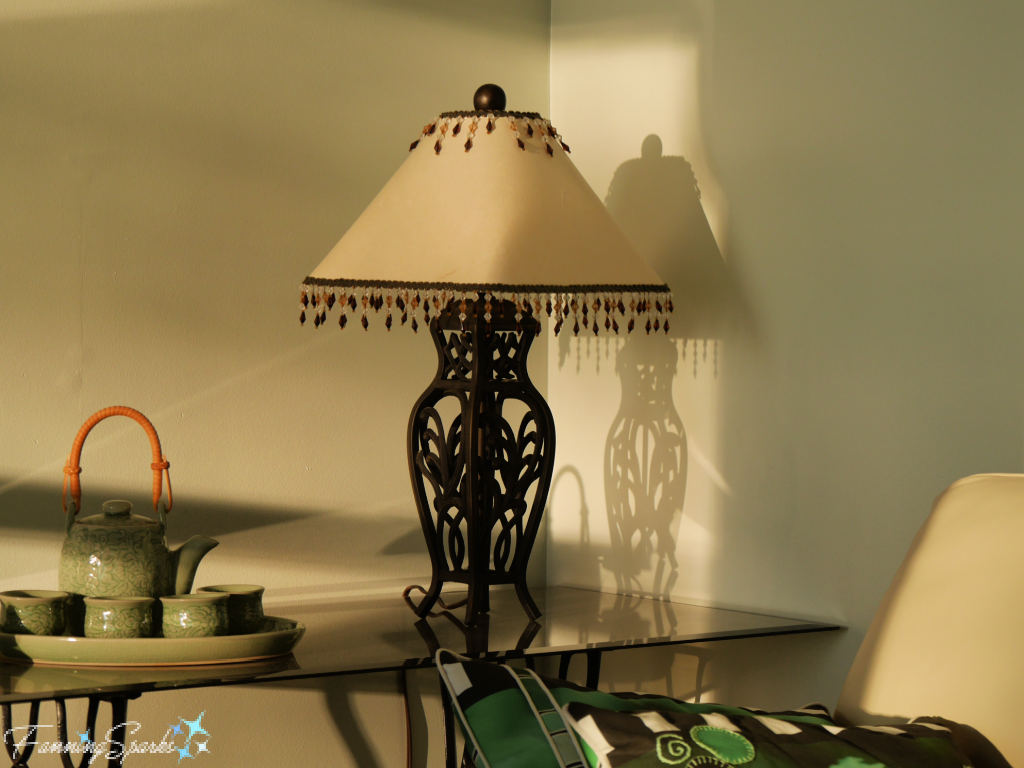 Finding #4 One Size Does Not Fit All
Finding #4 One Size Does Not Fit All
Draper doesn’t mince words when it comes to the “vast difference the size of a lamp can make”. She wrote “I would be happy to place a large bet that the lamps in nine out of ten rooms are too small. A small lamp is useless from both decorative and functional standpoints. It isn’t much to see, and it isn’t much to see by.” She provides the below sketch to illustrate her point.
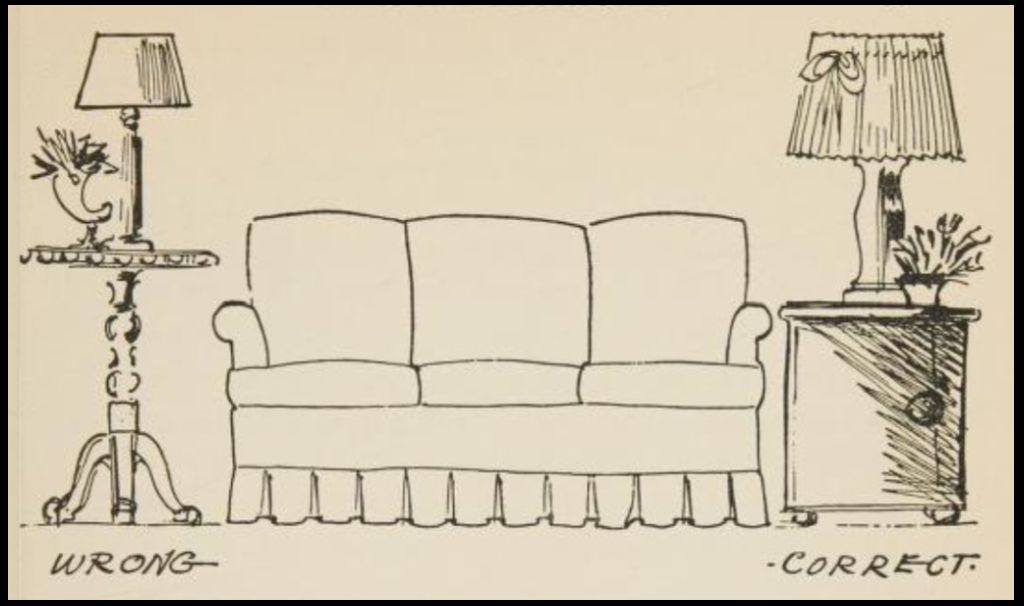 Draper goes on to say “Fifty-eight inches is a good, average height for all living-room lamps to measure from the tops of the shades to the floor. Lamps should not only be fairly high, but they should also have bulk. A thin, tippy lamp is a menace to have around and you’ll have trouble finding a shade that won’t look too big for the base.” The 58-inch rule doesn’t seem to be relevant anymore—instead the rule of thumb referenced must frequently seems to be to select a lampshade in proportion to the lamp’s base.
Draper goes on to say “Fifty-eight inches is a good, average height for all living-room lamps to measure from the tops of the shades to the floor. Lamps should not only be fairly high, but they should also have bulk. A thin, tippy lamp is a menace to have around and you’ll have trouble finding a shade that won’t look too big for the base.” The 58-inch rule doesn’t seem to be relevant anymore—instead the rule of thumb referenced must frequently seems to be to select a lampshade in proportion to the lamp’s base.
Specifically,
1. The width of the lampshade should be roughly equal to the height of the lamp base.
2. The height of the lampshade should be roughly ⅔ – ¾ of the height of the lamp base.
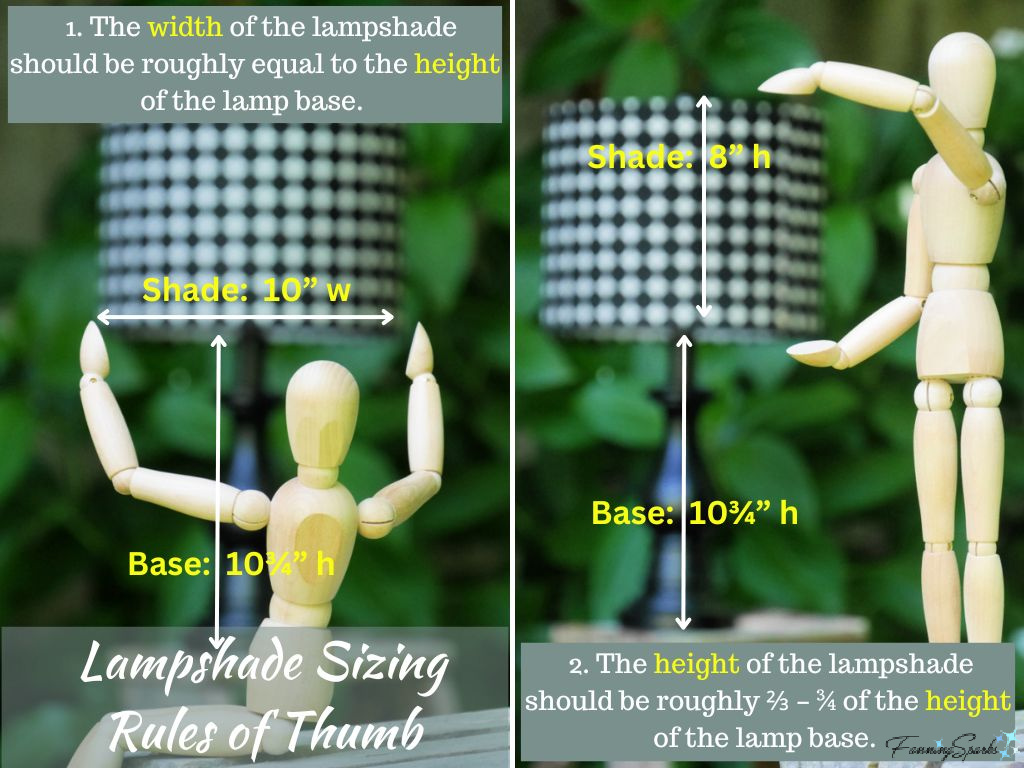 The Sorella Glenn website elaborates, “There are always exceptions to these rules when you consider how your lamp is being used. For instance, a pair of tall buffet lamps needs narrow shades.” The tall, slim lamps shown below at the Birmingham Southern Living Idea House illustrate this point.
The Sorella Glenn website elaborates, “There are always exceptions to these rules when you consider how your lamp is being used. For instance, a pair of tall buffet lamps needs narrow shades.” The tall, slim lamps shown below at the Birmingham Southern Living Idea House illustrate this point.
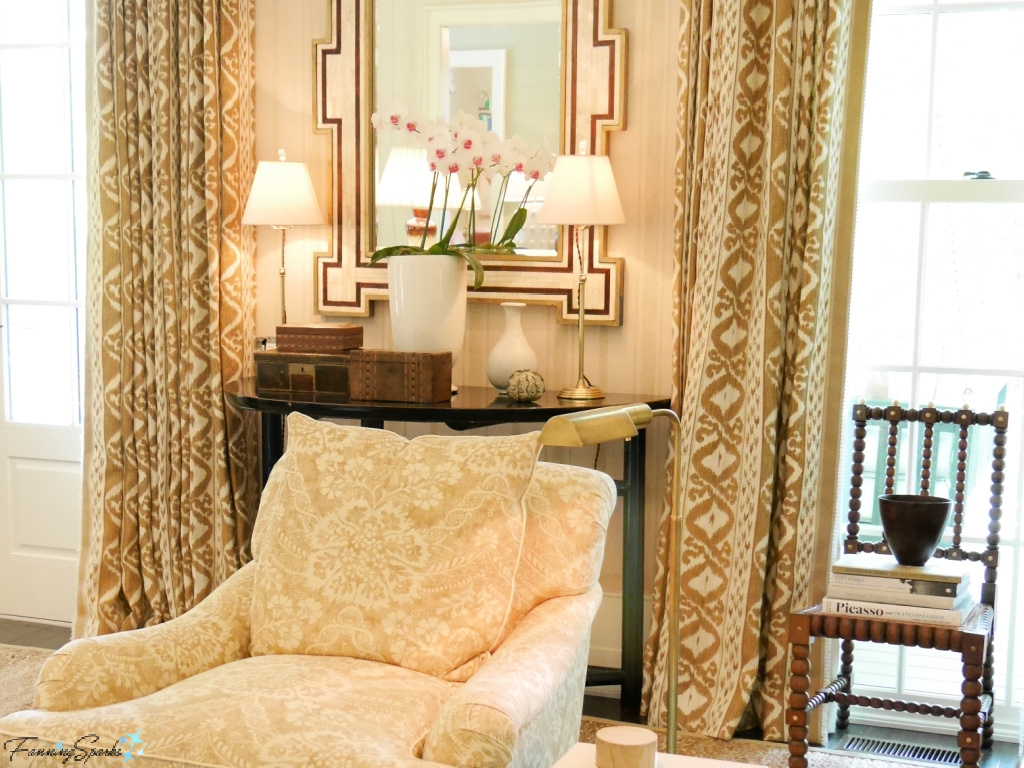 Finding #5 Matchy-matchy? Yea and Nay
Finding #5 Matchy-matchy? Yea and Nay
At one time, it was de rigueur to use table lamps in pairs. A pair of identical lamps sitting on matching end tables, at both ends of a sofa, for instance, was a classic arrangement. Draper wrote “The average living room will probably need only four main lamps-one at each end of the sofa, the other two at other points in the room where comfort demands them. … you will add greatly to the balance and chic of your room if the four lamps are identical. Or, if you don’t want to have all four exactly alike, at least have two pairs. Better still, have two pairs of lamps and four matching shades.”
Nowadays, decorating rules are not so hard and fast. Selecting lamps, singularly or in pairs, is simply another design choice to be made. A pair of identical lamps can add symmetry and balance to a room. In a bedroom, for instance, it is popular to place matching lamps on both sides of the bed. The repetition adds an element of harmony and calmness as illustrated in the below photo from the Crane Island Southern Living Idea House.
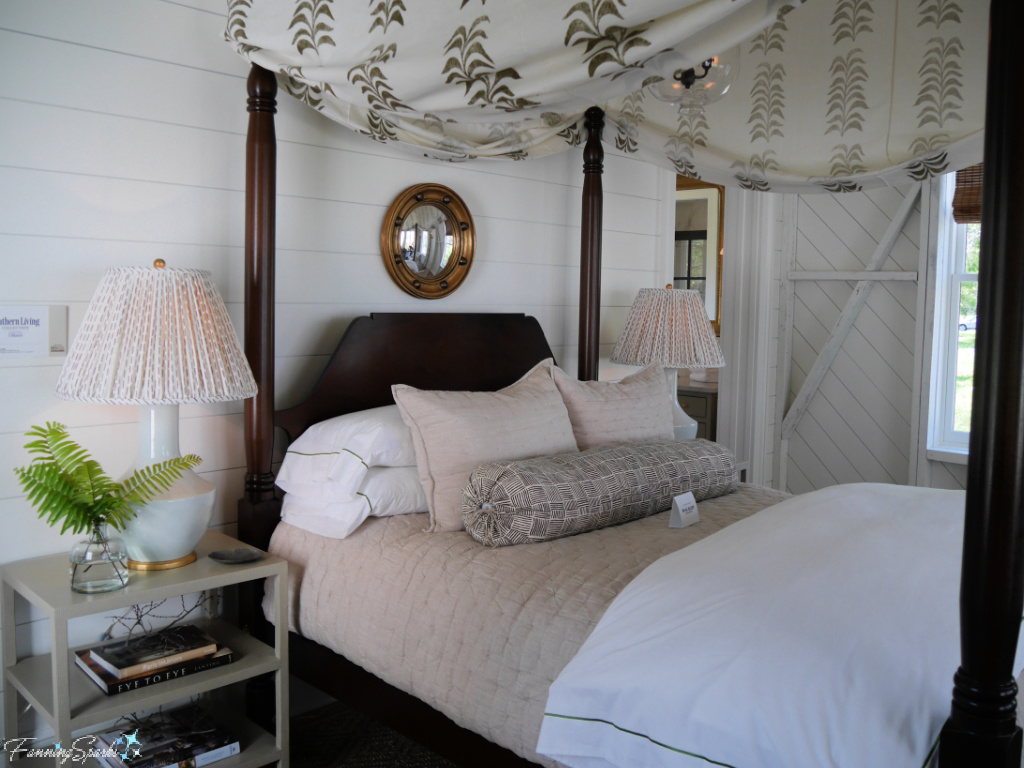 Matching lamps are also a popular choice for sideboards or console tables where they can be used to frame a focal point. In the below photo, also from the Crane Island Idea House, a pair of dramatic table lamps help to frame the stunning wall gallery.
Matching lamps are also a popular choice for sideboards or console tables where they can be used to frame a focal point. In the below photo, also from the Crane Island Idea House, a pair of dramatic table lamps help to frame the stunning wall gallery.
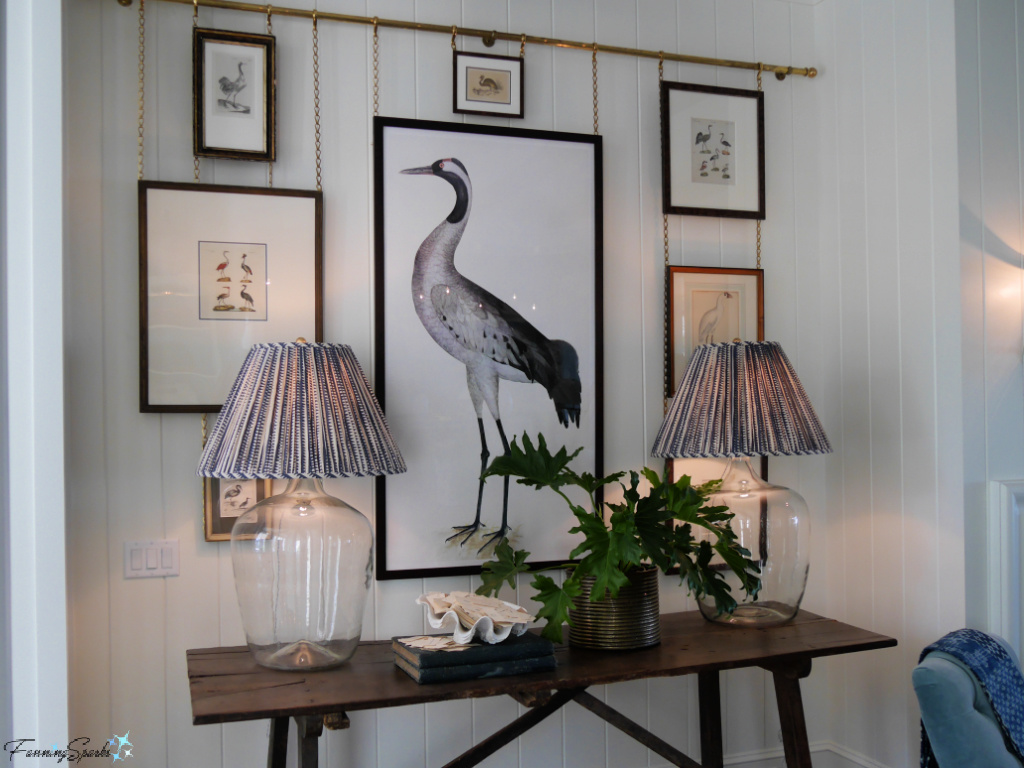 Individual lamps, or groupings of complementary lamps, can add interest and energy while being less predictable. Notice how the single table lamp shown below breaks away from the expected matching bedside lamps.
Individual lamps, or groupings of complementary lamps, can add interest and energy while being less predictable. Notice how the single table lamp shown below breaks away from the expected matching bedside lamps.
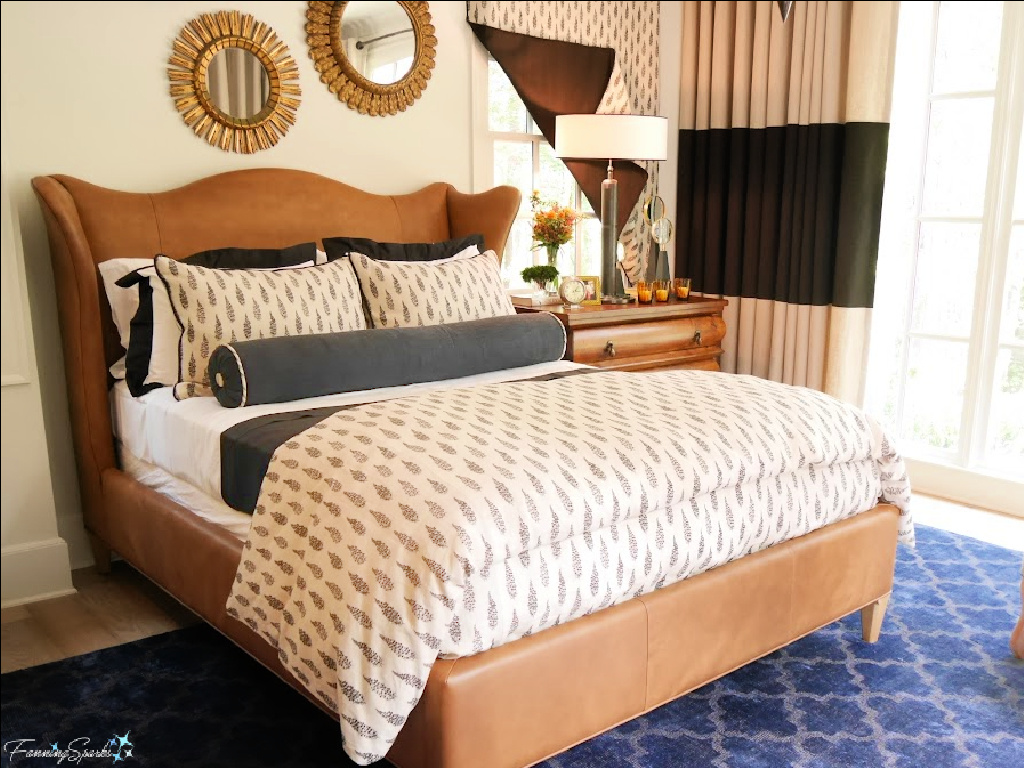 Of course, the uncommon profile of this lamp with its tall, narrow base and short, wide shade, is quite dramatic in itself. It’s a great example of a table lamp contributing to the room’s décor. It was spotted at the Senoia Southern Living Idea House.
Of course, the uncommon profile of this lamp with its tall, narrow base and short, wide shade, is quite dramatic in itself. It’s a great example of a table lamp contributing to the room’s décor. It was spotted at the Senoia Southern Living Idea House.
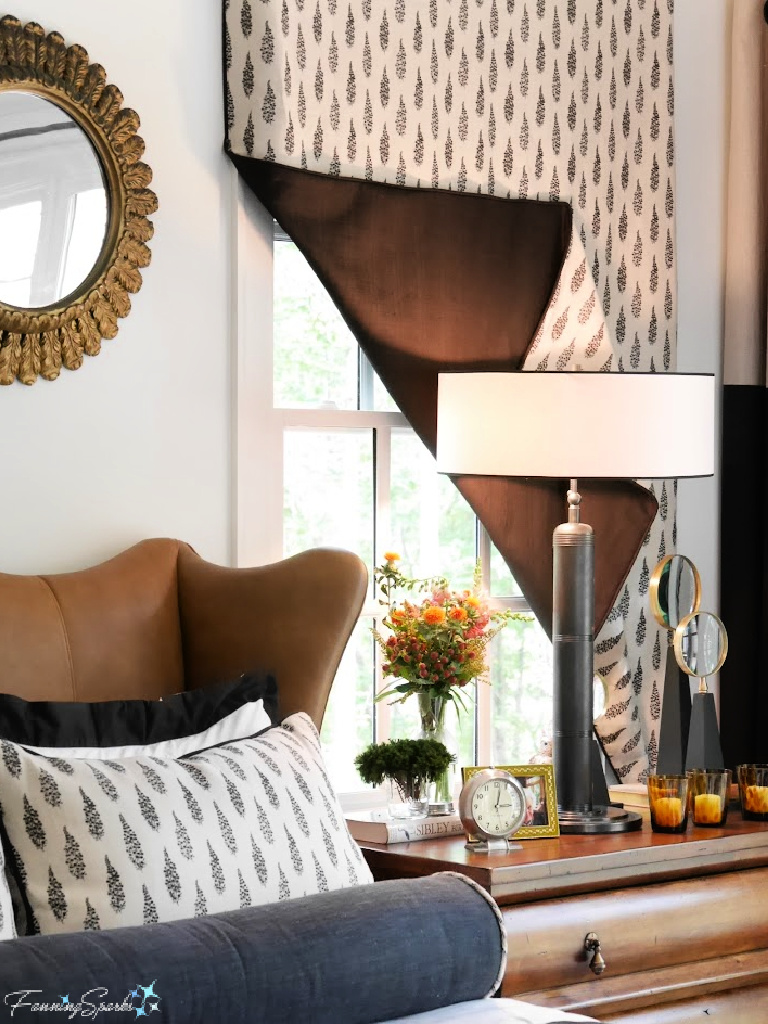 Finding #6 Lampshades Are Like Hats
Finding #6 Lampshades Are Like Hats
“Lamp shades are like hats-they go in and out of style.” wrote Draper. “And they are probably one of the few things in your whole house that I believe should be kept in the fashion. Old furniture, softly faded chintz and old silver will give your house a mellow quality. But your lamp shades should be your modern note. Their styles won’t change too rapidly to make this impractical-you probably won’t want to change them more often than once every three or four years.”
It has never occurred to me to keep my décor in fashion by changing the lampshades every 3-4 years but, given the variety and potential of the lampshades currently on offer, I will have to give serious consideration to this advice.
More Info
Check out my new Pinterest board—Lampshades – FanningSparks Favs—which is dedicated to lampshades for table lamps and packed with inspiring ideas to incorporate into your next lampshade selection or maker project.
You may also be interested in these blog posts featuring the Southern Living Idea Houses:
. Ideas from the Idea House
. 10 Ideas from the 2022 Idea House. One of the ideas called out in this post was to cover lampshades with fabric.
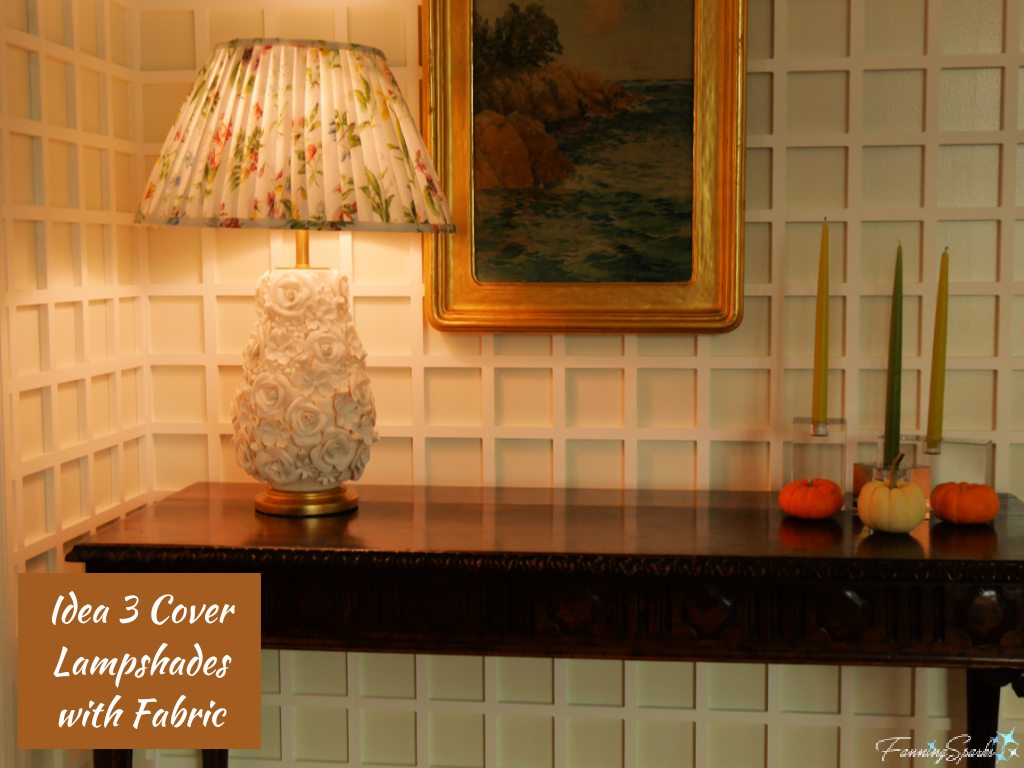 To learn more about the lampshade designers mentioned in this blog post, see their websites listed below.
To learn more about the lampshade designers mentioned in this blog post, see their websites listed below.
. Alvaro Picardo
. Susi Bellamy
. Sorella Glenn
. Elegance Lamps
. Lara Sparks Embroidery
. Art Shades by Sarah Walker
The following books and articles were consulted in the writing of this blog post:
. Decorating is Fun, written by Dorothy Draper in 1939, is available here on Internet Archives.
. How to Choose a Lampshade the Complete Guide 2022 article by online decorative lighting shop Pooky.
Today’s Takeaways
1. Lampshades can be considered a blank canvas.
2. When it comes to lampshades, one size does not fit all.
3. “Effective lamps and accessories can lift any room right out of mediocrity into something as distinguished and gay as a Paris hat.” Dorothy Draper


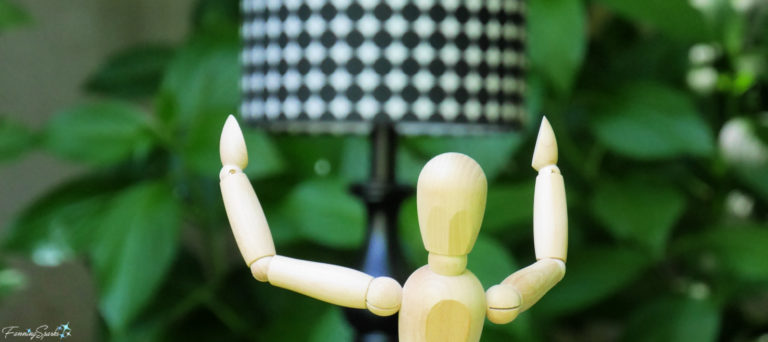


2 Comments
@Crystal, My pleasure! Your lampshades are extraordinary! Peg
Thank you so very much for including my work in your blog post! I appreciate it very much. ❤️